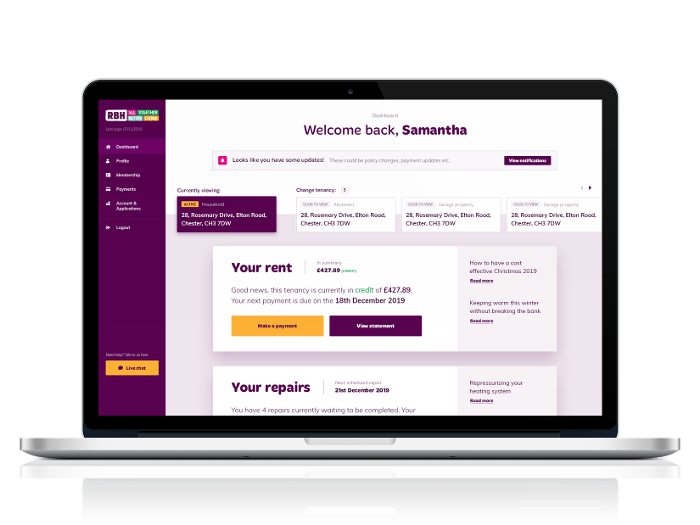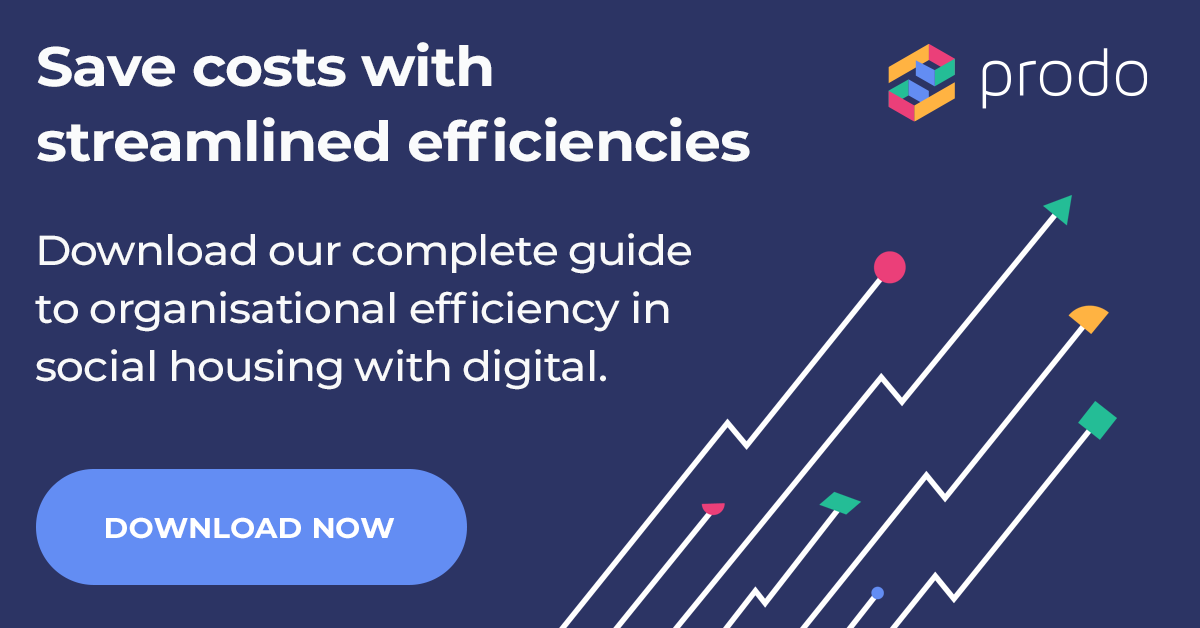Creating sustainable tenancies is essential; you want happy tenants in properties who are willing and able to report any issues within the home. Building a successful community means free instances of anti-social behaviour, causing less damage and resulting in fewer repairs needed.
We’ve highlighted five ways your housing association can improve its repair reporting process to better serve tenants.
1. Identify areas of improvement in the current process
There are so many places to start looking for improvements, it can sometimes be hard to know where to begin.
Poor diagnostics in portals means you’re limited as to how much and what information you can record. It’s essential to ensure whichever method you use is easy for all of your tenants to use, regardless of ability or language etc.
Feedback from internal teams, call centres, tenants and external suppliers can be overwhelming. We recommend starting by splitting them into groups, perhaps consider online surveys for gaining more information in a more manageable format.
Matt Cooney from PA Housing explained the issues they had by not utilising feedback:
“We didn’t involve customers enough in the first wave, that’s why we’ve had to make revisions to the customer experience.”
Start by trying to understand the functionality of your current processes - what can it do, what can’t it do? After this, look at how your using the data - who is using it, how often and how successfully? Following this, you can look at the user feedback you have - what do these existing users think of it?
Once you have this information, this will then give you an idea of:
- What you’re replacing because it’s an essential part of the system
- What you're not replacing because it isn’t being used
- What you need to improve because it isn’t working
- What you can enhance because it isn't working well enough
The above will provide you with a basis for a Minimum Viable Product (MVP) or Launchpad offering, in other words - what the minimum amount of work needs to be carried out in order to replace your current system.
2. Create a roadmap
The next step is to map out solutions by including all stakeholders, tenants, internal staff, suppliers, board members etc. This will test the theory and prioritise the solution.
Conduct customer and stakeholder interviews to find out important feedback. The feedback will help your housing association make further improvements and ensure that the new system is meeting the needs of tenants. Speak with the customer-facing stakeholders and find out what the most common queries are that colleagues are asked by customers, as well as what the biggest frustrations for them are when it comes to doing their job. For example, if your HA uses an outside company for repairs, are you ensuring there’s a simple, fast and convenient way to get the information across from the tenant to the repair company and highlight to them when a query is being dealt with and what the timeframes are.
With housing reports showing an increasing demand for digital tools by tenants, it’s also important to remember to include the customers in this process in our experience; the most successful projects always start with engaging with customers and continue to do so right the way through the project. At the early stages, you’re not asking customers for the solutions, you’re asking them to highlight the problems so that you can think about how to solve them.
These functional stages will help identify what the system needs to do, whilst the technical part will identify how the system will do these things. Typically, you will look to understand:
- What the current systems are and what versions are being used
- What systems you have and how you currently assess what is needed from them
- What documentation you have on those systems
- If you have documented APIs / Web Services, who your current contact is there and what the relationship is like
- If there is an SLA / agreement / contract
- What the future plans are for these systems. If there are any planned / imminent upgrades or a replacement scheduled.
3. Implement new technology
Repair reporting is a great place to play your digital cards. Nowadays, numerous digital solutions allow you to improve the user’s journey of reporting a repair, including online portals, mobile apps and chatbots. These tools allow tenants to report repairs online quickly and easily without the need for calling or emailing, reducing your team’s call volume.
This is what Rochdale Bouroughwide Housing (RBH) did. They found that they were in need of a customer self-service portal from feedback they’d been given and following a detailed and collaborative consultancy phase. We worked with them to build a bespoke portal that would allow RBH customers to pay rent, check their account balance, report any repairs and to book any appointments required. The repair reporting process has previously been via a call or a face-to-face meeting, whereas, with their new customer self-service portal, they now had channel choice.

Image source: RBH Repairs Portal
Digital solutions can provide real-time updates on the status of repairs, allowing tenants to stay informed throughout the process, again, reducing the need for tenants to chase your team. The key consideration here is to ensure your digital platform is as easy-to-use as possible for all tenants.
If you already have a self-service solution but are not seeing the expected results, consider the design and how it directs your tenants. Is it a clear, user-friendly experience to navigate? It’s all well and good to have a self-service solution, but only if your users can find the page they’re looking for in the first place!
4. Track data and review the performance of the new system regularly
With your pre-established goals and objectives, you must track and assess the system's performance regularly. Such analysis will help your association gauge how well the system works and allow you to make any necessary adjustments.
That could involve tracking and benchmarking KPIs, for example, look at the number of reported repairs, the types of repairs reported, and the time it takes to complete repairs, so that you can assess how you can reduce these figures going forward. For example, if you are improving the process to increase satisfaction, check if the number of complaints has reduced since you started.
It’s crucial to have key disciplines when monitoring the success of your roadmap:
- look at patterns overall in communication, not just a linear ‘phone-to-web’ channel shift
- look at the underlying reasons for preferences in communications channels, and check for duplication and service effectiveness
- a mix of data and qualitative information, analysed together, gives the fullest and most useful intelligence
- compare the findings of your inquiry against common narratives in the business; use them to challenge the mindset if it is not accurate
- seek to assess quality of life and customer satisfaction as well as use of media and efficiency savings
5. Encourage feedback from tenants
Since the idea is to ease the reporting process for tenants, you will want to get their opinions on the new system's effectiveness. Collect feedback from them about how the system works compared to the old one. This will allow you to identify any gaps for improvement and shows whether the new system serves its intended purpose.
To guarantee the effectiveness of your reporting processes and better customer experience, digital platforms are your friend.
Learn more about how you can use digital to streamline your association’s activities in this new guide, The ultimate guide to driving organisational efficiency in a housing association with digital.
Top header image source: Pexels






.jpg)
